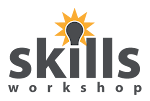This all came about because I wanted to create a Halloween resource based on an infographic. I looked everywhere for articles on UK spending at Halloween and couldn't find a thing. All the ones on the web were based on US data.
Finally I found an interesting article in the Guardian on October 30th. No infographic though - just a simple bar chart - so I decided to have a go at creating my own.
It's not perfect - I've got a lot to learn - but I had a lot of fun making it! The free version of Venngage is restricted - but not too badly. I would have gladly paid for just one month's trial for $15 - but it was one of those schemes where they keep taking a monthly payment until you cancel. I didn't want to mess around so stuck with the free version. The free version doesn't allow you too save as a jpg or other image but it does allow you to embed the code in a blog (as here) or post it to the Venngage Community Page.
I've also used a screen grab in order to insert it into a new Skillsworkshop Functional Maths resource Spooky Spending E3-L2 Functional Maths
There are lots of other infographic application out there and I intend to try a few more when I have time. If anyone has any suggestions or recommendations please leave a comment or contact me through skillsworkshop.


















